Introduction
With three years having passed since the launch of the original OM-D E-M5 back in early 2012, Olympus’s popular hybrid was due for an upgrade. Keeping the same retro styling, the new Olympus E-M5 Mark II boasts a wider 100 – 25,600 ISO sensitivity range, compared to 200 – 25,600 on the Mark I; a greater number of available shutter speeds that now cover 1/8000th – 60 seconds; and faster continuous shooting at 10fps, compared to 9 for its predecessor.
Olympus’s 5-axis Image Stabilization system has been improved to offer up to 5 stops of anti-camera shake, and as a sensor shift solution, stabilization is possible using any of the 40+ ZUIKO lenses available on the Olympus hybrid system.
There’s also a new 40Mp image-stitching mode, more customizable controls for better handling, and the higher-resolution 2.4m-dot electronic viewfinder and 1.04m-dot LCD screen boost performance, too. The video capabilities of the new E-M5 Mark II have also seen an upgrade with the addition of a 3.5mm stereo mic socket for attaching an external microphone to record better-quality sound, and full HD 1920x1080px video can be captured at 60fps, too.
The OM-D E-M5 Mark II is available now priced at $1099 (body only).
Olympus OM-D E-M5 Mark II measurements: No significant progress for Olympus Sensor Scores
With an overall DxOMark Sensor Score of 73 points, the new Olympus OM-D E-M5 Mark II ranks in 87th place for all tested sensors in the database, and is in joint first place for Olympus cameras alongside the OM-D E-M1 (also with 73 points). A modest 2-point improvement over the original E-M5 (71 points), the E-M5 Mark II ranks second for all four-thirds sensors in the database and is just surpassed only by Panasonic’s Lumix GH4 (74 points).
In terms of the E-M5’s sub-scores for Color, Dynamic Range, and ISO, there are no real stand-out results, with scores of 23 bits for Color, 12.4 EVs for Dynamic Range, and 896 for Low-light ISO, putting the E-M5 in positions around the mid-80’s among all cameras in the database.
Comparison 1: Olympus E-M5 Mark II vs E-M5 Mark I vs E-M1
Head-to-head against the original E-M5, the updated Mark II version offers a minor improvement in all sub-categories to give it that two-point lead overall, but there’s really not much in it. Compared to the flagship E-M1, which also features a 16Mp four-thirds sensor, the scores are pretty similar, too, although the E-M5 Mark II boasts slightly more favorable low-light ISO results, with a score of 896 ISO compared to 757 ISO for the E-M1.
The tables are turned somewhat for Dynamic Range, however, where the E-M1 just has the edge with 12.7 EVs compared to 12.4 EVs for the E-M5 Mark II, which equates to around a one-third of a stop better Dynamic Range for the E-M1. Take a look at Dynamic Range performance across the ISO sensitivity range, and you can see that the one-third stop advantage for the E-M1 remains the same as the ISO is increased, and that all three Olympus hybrid models offer good Dynamic Range results of over 10 EVs up to ISO 800.
With scores of 23 bits for the E-M5 Mark II and E-M1, and 22.8 bits for the E-M5, all three sensors offer similar results for Color Sensitivity, too, with good color rendition up to ISO 400, and dropping below 14 bits only at the top end of the sensitivity scale.
Comparison 2: Olympus E-M5 Mark II vs Sony a6000 vs Sony A7R
Unsurprisingly, against the best-performing APS-C and full-frame sensors in the Sony a6000 and a7R hybrid cameras, respectively, the lower resolution and physically smaller Olympus four-thirds sensor is a little off the pace.
The increase in physical sensor size from the Olympus’s 13×17.3mm four-thirds sensor to the Sony a6000’s 15.6×23.5mm APS-C sensor equates to around 2/3rds of a stop better performance from the bigger sensor across the board. Step up in size again to the Sony A7R’s 24×35.9mm’s full-frame offering, and the difference is roughly the same again, putting Sony’s A7R almost 2 stops ahead of the E-M5 Mark II in all categories.
For Dynamic Range, however, the advantage of Sony’s larger sensors is only that wide at base ISO 100, with the gap narrowing somewhat as sensitivity increases. In fact, between ISO 200 to ISO 3200, Dynamic Range performance between the E-M5 Mark II and Sony a6000 is much closer, and while the A7R stays out in front, the differences between the sensors at higher ISOs isn’t quite as wide as the headline scores initially indicate.
It’s not quite the same pattern for Color Sensitivity, however, where the Sony a6000 and A7R offer fairly consistent improvements in color graduations at all ISO sensitivities. The A7R is just under 2 stops better than the E-M5 Mark II for color throughout the ISO range, so although good color rendition of over 20 bits is possible on the E-M5 Mark II up to ISO 400, the Sony A7R delivers the same color up to ISO 1600. The same is true for ISO signal-to-noise results, too, where the larger full-frame A7R sensor offers good results of over 32 dB up to ISO 1600, compared to the E-M5, which drops below 32 dB at around ISO 400.
Conclusion
The improvements to the EVF and LCD screen resolution, alongside more customizable controls, have updated the OM-D E-M5 Mark II to respond to the 2015 hybrid market. What’s more, with its retro styling, weather-resistant construction, and large range of interchangeable lenses, it looks likely to remain a big hit with Olympus enthusiasts. The 5-axis image stabilization system and 40Mp stitching mode will be handy for some shots too, but sticking with the similar, if not same, 16Mp four-thirds sensor from the Mark I means that the latest model doesn’t offer any real improvement to sensor image quality over its predecessor in the DxOMark Sensor Scores.


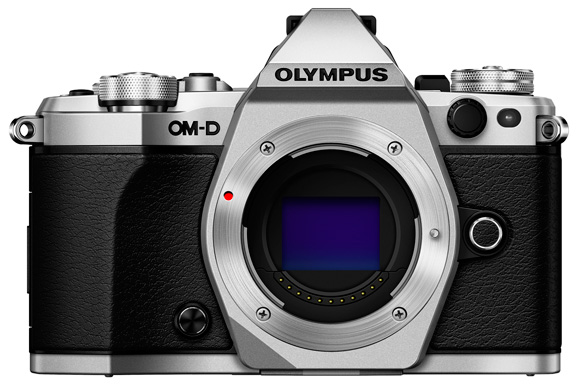




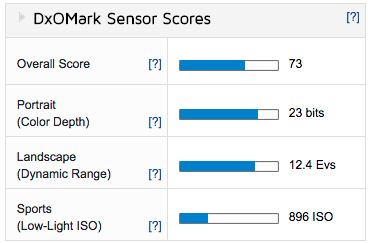
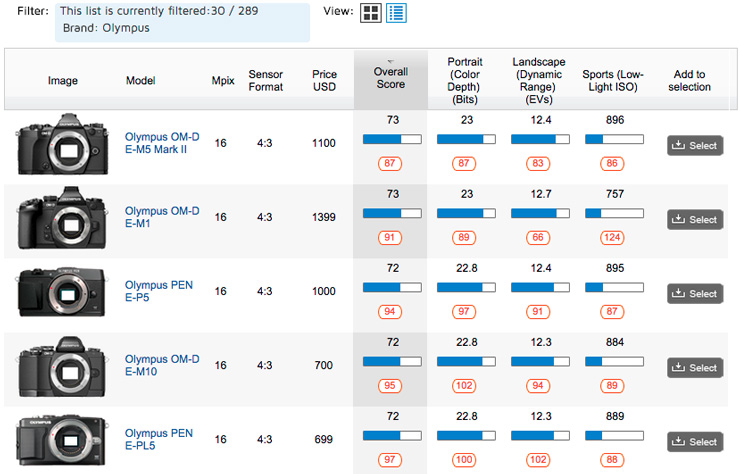
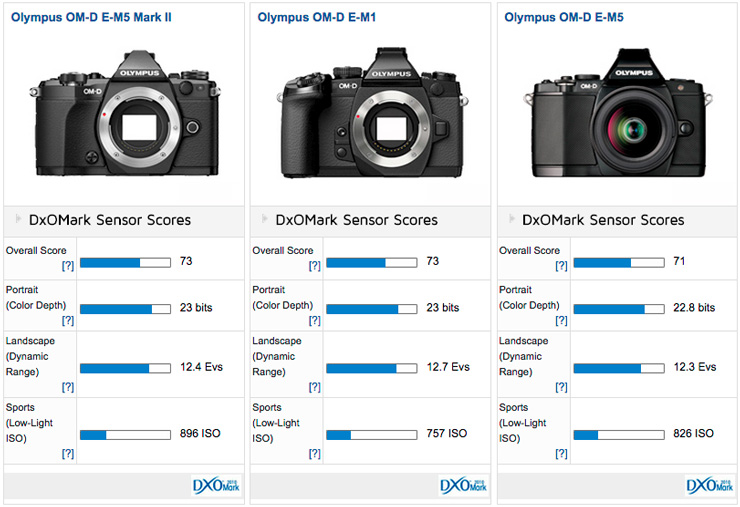
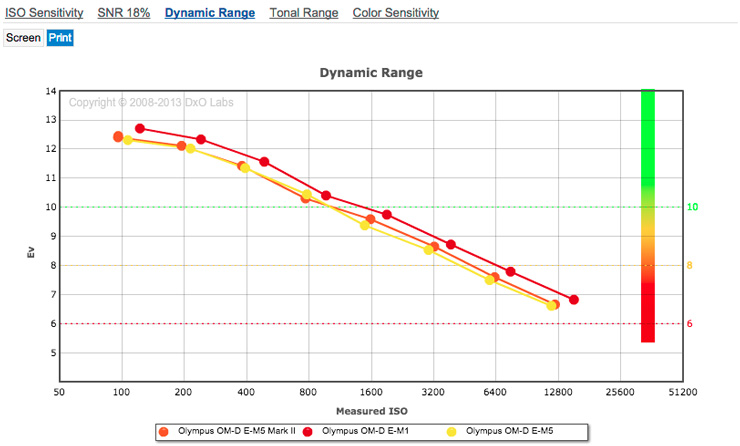
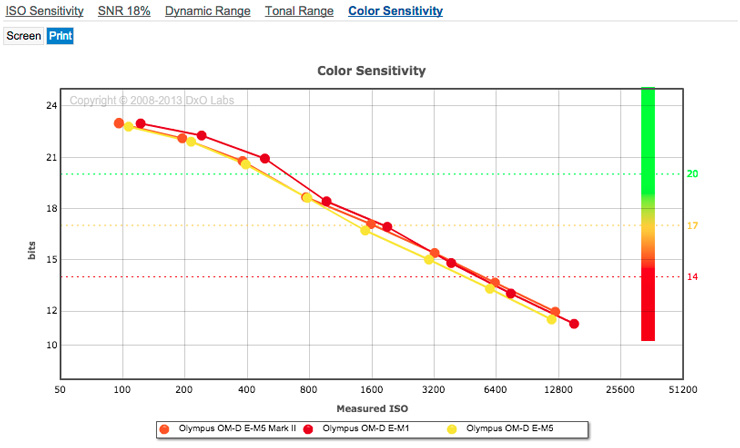
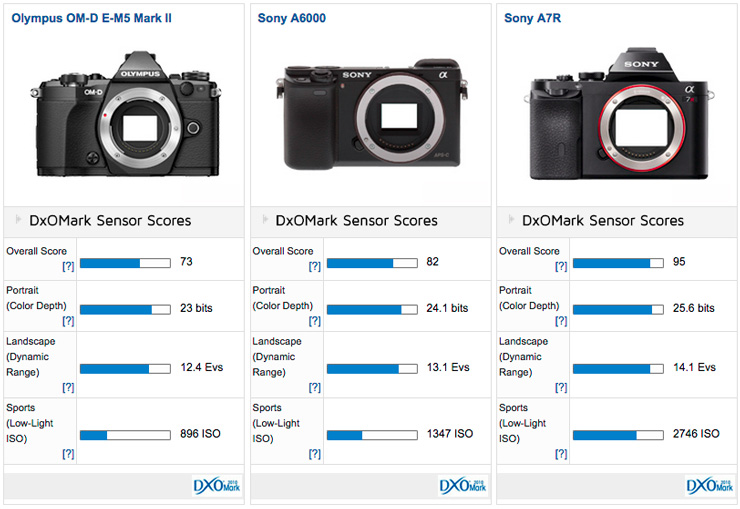
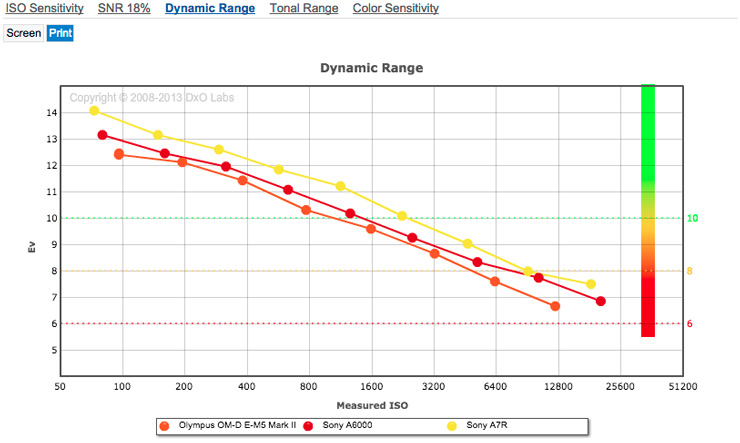
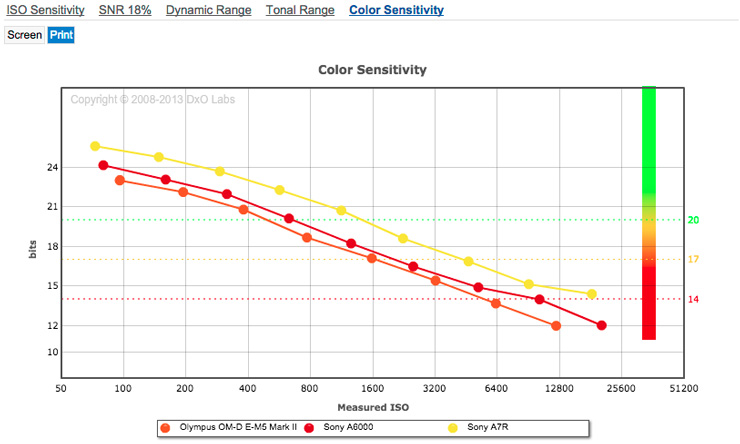
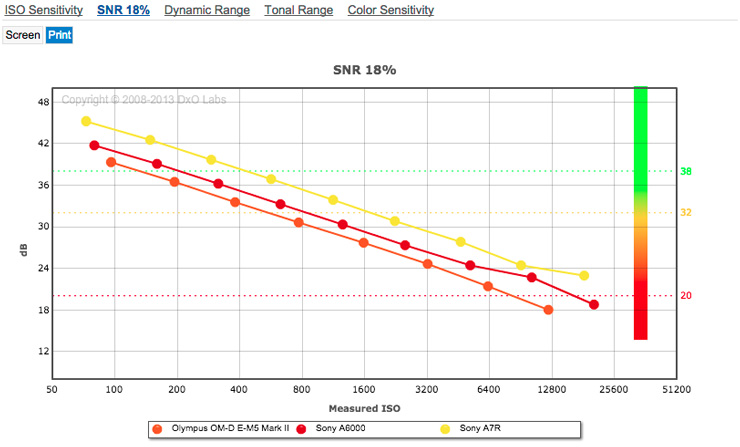
DXOMARK encourages its readers to share comments on the articles. To read or post comments, Disqus cookies are required. Change your Cookies Preferences and read more about our Comment Policy.